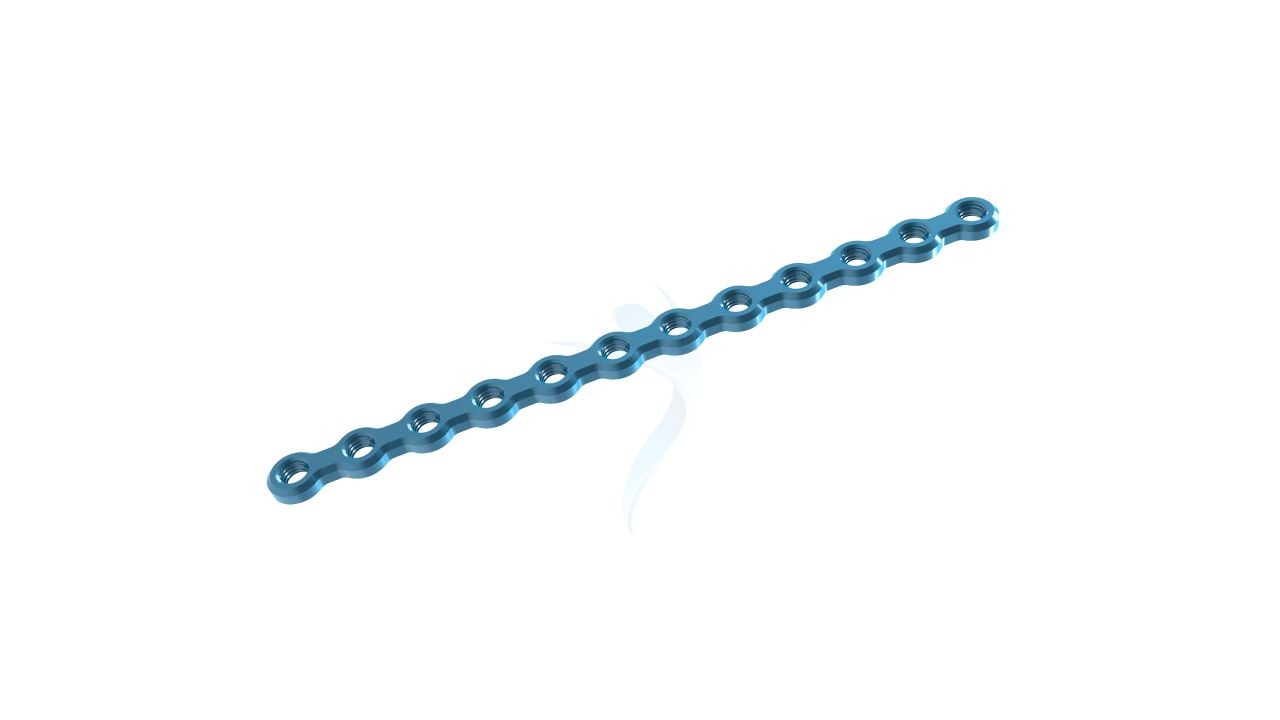Compact Hand Plates - 1.5 mm Condylar
Product Overview
The Compact Hand Plates - 1.5 mm Condylar Plate represent cutting-edge orthopedic innovation. These implants are meticulously crafted to provide superior stability and support for hand surgeries. With their precisely engineered design and slim 1.5 mm profile, these plates offer optimal fixation for fractures, fusions, or osteotomies of the hand bones, particularly around the condyles. Trust in our commitment to excellence for exceptional surgical outcomes and patient satisfaction.







Product Uses
- Fracture fixation : Provides stable fixation for fractures of the metacarpals, phalanges, or other hand bones, particularly around the condyles.
- Fusion Support : Facilitates fusion of joints affected by conditions like arthritis or trauma, focusing on the condylar region.
- Osteotomy Stabilization : Assists in the alignment and stabilization of bones during osteotomy procedures.
- Soft Tissue Repair :Supports tendon or ligament repairs by reinforcing the surrounding bone structure..
- Revision surgeries : Utilized in secondary procedures to address complications or failures of previous hand surgeries.
- Trauma Management : Manages complex hand injuries resulting from accidents or sports-related incidents.
Product Specification
- Material : High-grade titanium or stainless steel for durability, strength, and biocompatibility.
- Thickness :Slim profile of 1.5 mm for minimal tissue disruption and discreet implantation.
- Length : Available in various lengths to accommodate different hand anatomies and surgical requirements.
- Design :Precision-engineered with a versatile adaptation design to fit the unique contours of the hand bones.
- Packaging : Individually packaged and labeled for easy identification and storage in the operating room.
- Regulatory Compliance :Manufactured in compliance with international quality standards and regulatory requirements for medical devices.
Compact Hand Plates - 1.5 mm Condylar Sizes
Comprehensive Guide for Compact Hand Plates 1.5 mm Condylar
- Patient Evaluation : Assess the patient's medical history, hand function, and any existing conditions affecting the hand.
- Diagnostic Imaging : Perform pre-operative imaging studies such as X-rays, CT scans, or MRI to evaluate the extent and nature of the hand injury or condition.
- Surgical Planning : Collaborate with the surgical team to develop a detailed plan for the procedure, including the selection of appropriate implant sizes and configurations based on the patient's anatomy and the specific surgical goals.
- Informed Consent : Discuss the surgical procedure, potential risks, benefits, and alternative treatment options with the patient, ensuring they understand and consent to the proposed treatment plan.
- Pre-operative Instructions : Provide the patient with pre-operative instructions, which may include guidelines for fasting, medication management (e.g., blood thinners), and skin preparation to minimize the risk of surgical site infection.
- Anesthesia : Administer local or general anesthesia based on the patient's condition and surgical plan.
- Incision : Make a small incision over the injured area to access the bone requiring stabilization.
- Plate Preparation : Select an appropriately sized "Compact Hand Plates - 1.5 mm T Plate (Head 3 Hole)" and contour it as needed to fit the bone anatomy.
- Plate Placement : Securely position the adaption plate over the fractured or fused bone using surgical screws through the locking holes for enhanced stability.
- Wound Closure : Close the incision using sutures or staples, ensuring proper wound care and dressing application.
- Recovery Room : Transfer the patient to a recovery area for monitoring until they awaken from anesthesia.
- Pain Management : Manage post-operative pain with prescribed medications and non-pharmacological interventions as needed.
- Rehabilitation : Initiate a hand therapy program to promote range of motion, strength, and function of the hand.
- Complications Monitoring : Educate the patient about potential complications such as infection, implant failure, or delayed healing, and provide instructions for seeking medical attention if needed.
- Activity Restrictions : Advise the patient on activity restrictions and hand immobilization techniques to prevent further injury and promote optimal healing.










.png)




